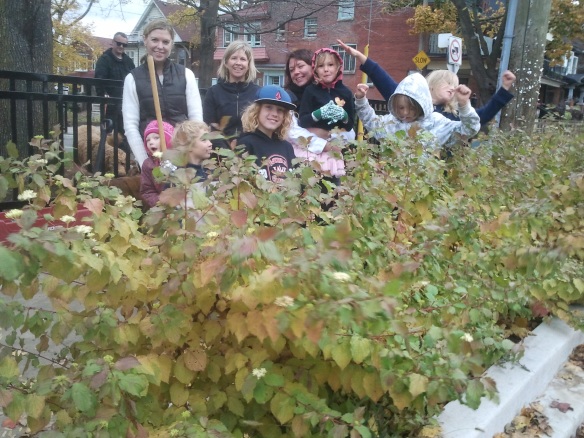What’s involved in urban street gardening along Roncy
Designing and maintaining the plant beds along an urban main street, is not the same as gardening in your own yard, says RoncyWorks Green Team co-lead, Heidi Eisenhauer. “The street gardens face conditions and adversity that private gardens don’t have to.” For two years now, Heidi has been ordering the plants that are delivered to the High Park Library, which keeps them in safety until they can be picked up. The co-leads monitor the beds and coordinate the ongoing and one-off volunteer efforts. Although at the moment we average one volunteer per bed, it’s a lot of work for one person, so we’re always looking for other gardeners who are prepared to commit some time each week or a few hours per month to looking after a bed. For those who can’t commit to weekly or monthly tending, there are one-off tasks, around planting and mulching time that could use extra hands.
Planting starts in June, and continues through the summer. The trick is to get the plants in as soon as possible after they are delivered. Mulching takes place in July.
Watering is key after the plants go in. We have a water service that comes Mondays, Wednesdays and Fridays, (but not on holiday Mondays). Luckily we have water hydrants, but they are not in each bed. The trick is to get the crew to use nozzles and not just pour water on the soil from open hoses.
“I find there are periods when I need to give my bed extra water, especially when I first plant something or when the weather is very hot without much rain, explains Carol Holland, a devoted volunteer who lives in Bloor West, but makes the trip to Roncy because she enjoys being part of this community effort.
Maintenance involves weeding and digging out shrubs, trimming, deadheading, replanting, and observing how all the plants are doing and affecting each other, and other problems that arise, like litter, theft, vandalism and damage from pedestrians and dogs. “It can be disheartening sometimes. We spend so much time and energy to beautify our street. But, all in all, these are just minor setbacks; if you consider the whole street, I think the beds look pretty good and there is not too much litter most of the time,” says one of our more recent volunteer, Catherine Gautry.
Welcoming other gardeners
We’re always on the lookout for local gardeners who would be willing to lend a hand, as it not only makes less work for everyone, but it’s wonderful to be part of this group effort. We get a lot of praise and encouragement from passersby and from each other. If you would like to join in, please contact greenteam@roncyworks.org.



